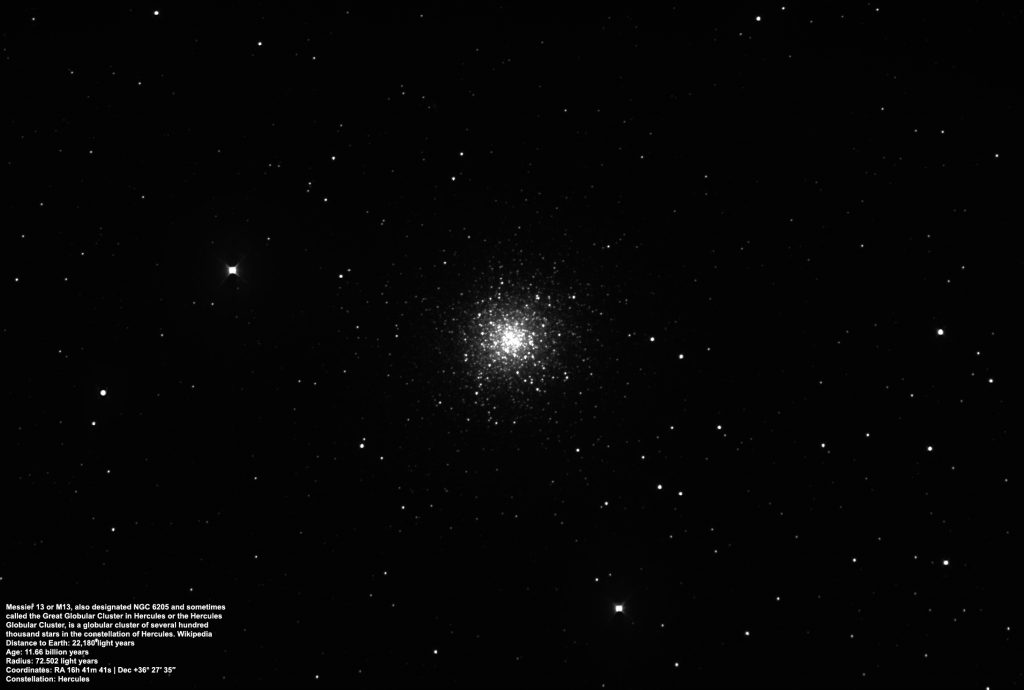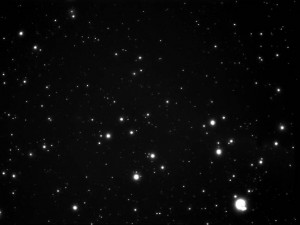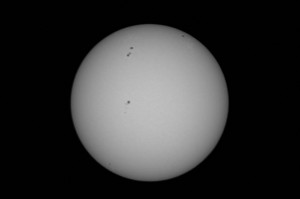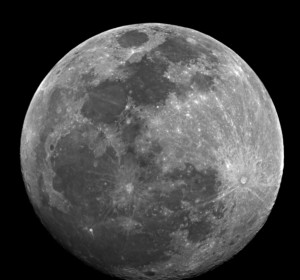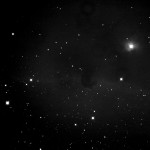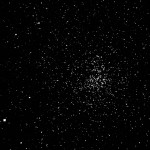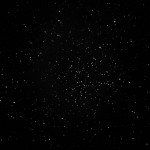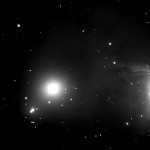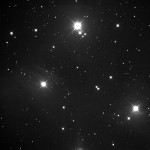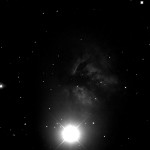Category Archives: Astrophotography
iTelescope – M83 LRGB Image
Gallery
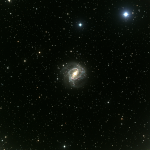
This gallery contains 1 photo.
Messier 83 Observation data (J2000 epoch) Constellation Hydra Right ascension 13h 37m 00.9s[2] Declination −29° 51′ 57″[2] Redshift 513 ± 2 km/s[2] Distance 15.21 Mly (4.61 Mpc) [3] Apparent magnitude (V) 7.54[4][5] Characteristics Type SAB(s)c[2] Apparent size (V) 12′.9 × 11′.5[2] Telescope Aperture 500 mm Focal Length 2262 mm (f/4.5) Imager: … Continue reading
Spent some time Polar Aligning, had trouble so took a quick pic with the SBIG ST-i
Tried to polar align my mount finally and just had issue’s
I’m going to go back out again tonight I hope and try again.
after homing the mount I slewed to Rigel and it was nowhere near where the scope was pointing, it was in the right part of the sky but was many degrees off, this seemed strange, I check my Lat/Long and date/time all where good. went into the TCS control panel and reset all the mount settings and still no good. after several hours and loosing all feeling in my fingertips I gave up for the night and fired up the SBIG ST-i (which I got as a guide camera) and took this shoot. nothing special but at least the camera worked
10 Light Frames @ 90s each and dark subtracted
New Images Feb 02, 2012
Quick post here to get up some images I took tonight
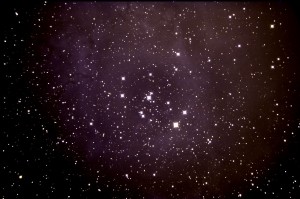
The Rosetta Nebula is a vast cloud of dust and gas, extending over an area of more than 1 degree across, or about 5 times the area covered by the full moon. Its parts have been assigned different NGC numbers: 2237, 2238, 2239, and 2246. Within the nebula, open star cluster NGC 2244 is situated, consisted of the young stars which recently formed from the nebula's material, and the brightest of which make the nebula shine by exciting its atoms to emit radiation. Star formation is still in progress in this vast cloud of interstellar matter; a recent finding of a very young star with a Herbig-Haro type jet by astronomers at the NOAO has been announced in Press Release NOAO 04-03 on January 22, 2004.
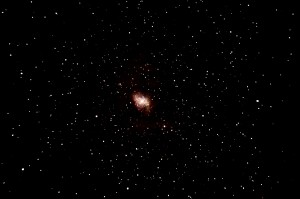
The Crab Nebula (catalogue designations M1, NGC 1952, Taurus A) is a supernova remnant and pulsar wind nebula in the constellation of Taurus. The nebula was observed by John Bevis in 1731; it corresponds to a bright supernova recorded by Arab, Chinese and Japanese astronomers in 1054. At X-ray and gamma-ray energies above 30 keV, the Crab is generally the strongest persistent source in the sky, with measured flux extending to above 1012 eV. Located at a distance of about 6,500 light-years (2 kpc) from Earth, the nebula has a diameter of 11 ly (3.4 pc) and expands at a rate of about 1,500 kilometers per second. It is part of the Perseus Arm of the Milky Way Galaxy.
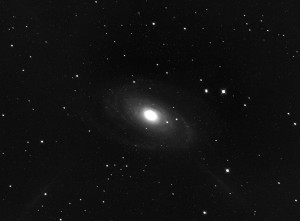
Messier 81 (M81, NGC 3031) in Ursa Major is one of the most conspicuous galaxies in the sky, and one of the nearest beyond the Local Group. It is a conspicuous spiral galaxy.
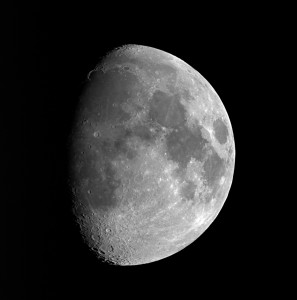
The Moon is the only natural satellite of the Earth,and the fifth largest satellite in the Solar System. It is the largest natural satellite of a planet in the Solar System relative to the size of its primary, having a quarter the diameter of Earth and 1⁄81 its mass. The Moon is the second densest satellite after Io, a satellite of Jupiter. It is in synchronous rotation with Earth, always showing the same face; the near side is marked with dark volcanic maria among the bright ancient crustal highlands and prominent impact craters. It is the brightest object in the sky after the Sun, although its surface is actually very dark, with a similar reflectance to coal. Its prominence in the sky and its regular cycle of phases have, since ancient times, made the Moon an important cultural influence on language, calendars, art and mythology. The Moon
M45 & M37 redone and New Image M37
Spent some time tonight capturing more images of M45 including some basic color as seen here
All Images were done through the AT10RC with the STL-11000M2 Camera. Images are Binned 2×2
First up is a redo of M45 – The Pleiades This is 6 x 360 second exposers @ -20c + 1 x 360 for Red, Green & Blue Stacked and Aligned in MaximDL then touched up In Photoshope CS 4
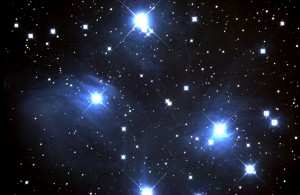
The Pleiades, also known as Messier 45 (M45), are among those objects which are known since the earliest times. At least 6 member stars are visible to the naked eye, while under moderate conditions this number increases to 9, and under clear dark skies jumps up to more than a dozen (Vehrenberg, in his Atlas of Deep Sky Splendors, mentions that in 1579, well before the invention of the telescope, astronomer Moestlin has correctly drawn 11 Pleiades stars, while Kepler quotes observations of up to 14).
Next is a redo of M37, again more exposer time but no color on this one This is 5 x 360 second exposers @ -20c. Stacked and Aligned in MaximDL then touched up In Photoshope CS 4
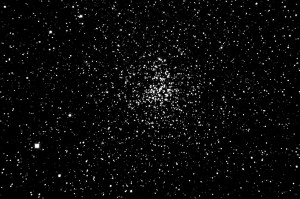
Although Messier 37 (M37, NGC 2099) is the brightest of the 3 open clusters in southern Auriga, this cluster was missed by Le Gentil when he rediscovered M36 and M38 in 1749, so that it was to Charles Messier to find this one independently on September 2, 1764. Generally unknown until 1984, all three clusters had been previously recorded by Hodierna before 1654.
Finally Here is something new M33 – “The Triangulum Galaxy” This is 6 x 180 second exposers @ -20c. Stacked and Aligned in MaximDL then touched up In Photoshope CS 4
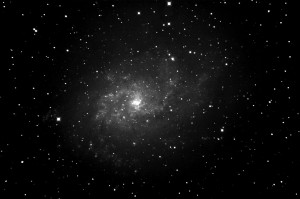
The Triangulum Galaxy Messier 33 (M33, NGC 598) is another prominent member of the Local Group of galaxies. This galaxy is small compared to its big apparent neighbor, the Andromeda galaxy M31, and to our Milky Way galaxy, but by this more of average size for spiral galaxies in the universe. One of the small Local Group member galaxies, LGS 3, is possibly a satellite of M33, which itself may be a remote but gravitationally bound companion of the Andromeda galaxy M31.
See the Full Images HERE
January 10, 2012 – New Images Posted
After spending hours workin on Polar Alignment, PEC and pointing on the Paramount I finally settled in to do some basic imaging. the following are 5-6 minute, unguided exposures thru the AT10RC/STL-11000M
Pixel scale is .92arc/sec per pixel measured through PemPro. Tracking was great but polar alignment is still not quite right.
Paramount ME Periodic Error
I just spent a nice cold night out measuring the Periodic Error on my Paramount ME and can say I’m very happy
Assuming I did everything correct I measured my PE at +1.1/-1.5 or just shy of 3 arc/sec peak to peak (2.6arc/sec) and PemPro Shows it can get this down to +0.4/-0.5 arc/sec
I measured for 12 Work Cycles with 1 second exposuser on my AT10RC with a STL-11000M2 Camera MaximDL was driving the Camera and of course TheSkyX the Mount.
Follow the link for more Information and screen pics of PemPro’s screen

